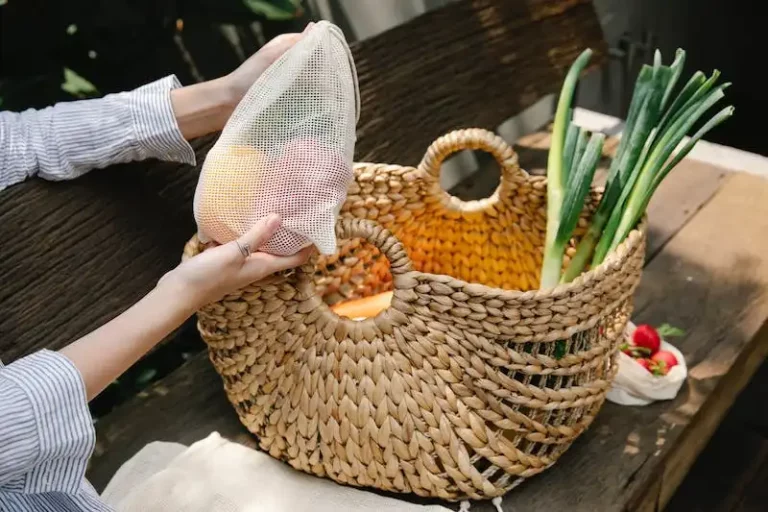When it comes to repotting snake plants, getting the process right can make all the difference. Snake plants (Sansevieria) are popular houseplants known for their air-purifying properties and easy care. However, like any other plant, they eventually outgrow their pots and need to be repotted.
One important thing to consider is the type of soil you use. Snake plants prefer a well-draining soil that doesn’t retain too much moisture, as they are susceptible to root rot. You can use a mix of regular potting soil and perlite to create a loose and airy blend.
When repotting, it’s crucial to choose a pot that is slightly wider and deeper than the current one. Snake plants like to have space for their roots to spread out, and a pot that is too small can hinder their growth. Signs that your snake plant needs to be repotted include roots coming out of the drainage holes, slow growth, or the plant becoming top-heavy.
To begin the repotting process, gently remove the snake plant from its current pot and loosen the roots. You may need to use a trowel or your hands to carefully separate the root ball. Once the plant is free, place it in the new pot and fill in the gaps with the potting mix, making sure the plant is at the same depth as before.
After repotting, it’s essential to give your snake plant the right environment to thrive. They prefer bright, indirect light, so placing your repotted snake plant near a window is ideal. Snake plants are known for their ability to tolerate low light conditions, but they will grow better with more light.
Now that you know how to repot your snake plant, it’s time to get started. Remember to choose the right potting mix, pick a suitable pot size, and provide the plant with the right lighting conditions. Follow these suggestions, and your snake plant will not only grow bigger but also be healthier and more vibrant.
Top Tips To Choose Snake Plant Pot
When it comes to choosing the right pot for your snake plant, there are several important factors to consider. The pot you choose can have a significant impact on the health and growth of your plant, so it’s important to choose wisely. Here are some top tips to help you make the best decision:
- Size Matters: Snake plants don’t require a lot of room, so it’s best to choose a pot that is only a few inches larger in diameter than the root ball. This will help prevent overwatering and ensure that the plant is snugly rooted.
- Material: Snake plants prefer terracotta pots as they allow for better airflow and drainage. Avoid pots made of plastic or other materials that do not allow the soil to breathe.
- Drainage is Essential: Ensure that the pot you choose has drainage holes at the bottom. This will prevent water from pooling at the roots and causing root rot.
- Avoid Tall and Narrow Pots: Snake plants have extensive root systems, so choosing a wider and shallower pot is preferable. Tall and narrow pots can restrict their growth and potentially cause the pot to crack.
- Consider Aesthetics: While function is important, don’t forget about the aesthetics. Choose a pot that will blend well with your home decor and make you happy every time you look at it.
- Choose Self-Watering Pots: If you tend to forget to water your plants or often go on vacation, consider choosing a self-watering pot. These pots have water reservoirs that slowly release moisture to the plant, preventing overwatering.
- Shop Around: Don’t settle for the first pot you find. Compare different options, both online and in-store, to find the perfect pot for your snake plant.
By following these top tips, you’ll be able to choose the best pot for your snake plant and ensure its long-term health and growth. Remember, a happy plant starts with a good pot!
Signs that Snake Plant Needs to be Repotted
If you have a snake plant and you notice any of the following signs, it’s time to consider repotting:
- Roots coming out of the drainage holes: If you see roots growing out of the bottom of the pot, it means that the plant has outgrown its current container and needs more space.
- Tightly packed roots: When you remove the snake plant from its current pot, if you notice that the roots are tightly packed and taking up most of the pot space, it’s a clear indication that repotting is necessary.
- Stunted growth: If your snake plant is not growing as it should, it could be due to lack of space for the roots to spread out and absorb nutrients. Repotting will provide the plant with fresh soil and promote better growth.
- Waterlogged soil: If the soil in your snake plant’s current pot is consistently wet and doesn’t drain properly, it could indicate that the potting mix has become compacted or the pot doesn’t have proper drainage holes. Repotting with a well-draining soil mix will help ensure the plant’s root health.
- Cracked or damaged pot: If your snake plant is currently in a plastic pot and you notice cracks or damage, it’s a sign that the pot is no longer providing a stable environment for the plant. Repotting into a sturdier container will help prevent any further damage.
- Overgrown basal shoots: Snake plants often produce new shoots called basal shoots, which grow from the base of the plant. If these shoots are overcrowded and competing for space, it’s a sign that repotting is needed to provide them with room to grow.
Remember, snake plants are known for being tough and can tolerate being root bound to a certain extent. However, repotting them when necessary will ensure they have the optimal environment to thrive and multiply.
Источник: lotusmagus.com
8 Ways to Choose Pots for Snake Plants
If you’re looking to repot your snake plant, it’s important to know the best ways to choose pots that will suit the plant’s needs. Here are 8 factors to consider when selecting a pot for your snake plant:
- Size: Consider the size of your snake plant when choosing a pot. If your plant has grown extensively, it may require a larger pot to accommodate its roots.
- Shape: Snake plants have basal rosettes, so they generally prefer pots that are wider at the top and narrower at the base. This allows for easier repotting and keeps the plant stable.
- Drainage: Ensure that the pot you choose has drainage holes. Snake plants require well-draining soil, so a pot with good drainage allows excess water to flow out and prevents root rot.
- Material: There are various materials to choose from, such as ceramic, terra cotta, or plastic. Each has its pros and cons, so consider factors like aesthetics, weight, and water retention when making your choice.
- Trays or saucers: Decide whether you prefer pots with attached trays or saucers to catch excess water. This can make watering easier and help keep your plants hydrated.
- Color and style: Consider the overall look and feel you want for your snake plant and choose a pot that complements your decor. There are plenty of options available in different colors, patterns, and styles.
- Root development: Snake plants have deep and extensive root systems. Look for pots that allow the roots to grow freely, providing enough space for them to establish in the new pot.
- Plant variety: Different snake plant varieties may have slightly different pot requirements. Some may prefer smaller pots, while others may need larger ones. Do some research on your specific variety to determine the best pot size.
By considering these factors, you can ensure that your snake plant is placed in a pot that meets its needs and allows it to thrive in its new environment.
10 Pot Suggestions for Snake Plants
If you’re looking to repot your snake plant, choosing the right pot is important for its health and growth. Here are 10 pot suggestions to consider:
1. Terracotta Pots: Terracotta pots are a popular choice for snake plants as they provide good airflow and drainage. Plus, the natural clay material blends well with the plant’s foliage.
2. Plastic Pots: Plastic pots are lightweight and often come with built-in trays to catch excess water. They can be a good option if you prefer to keep your snake plant indoors and don’t want to worry about the pot’s weight.
3. Clay Pots: Clay pots are another excellent option for snake plants. They retain moisture better than terracotta pots and come in a wider variety of sizes and colors.
4. Self-watering Pots: Self-watering pots are perfect for those who tend to underwater or forget to water their plants. These pots have a reservoir that allows water to be stored and released as needed, keeping the soil consistently moist.
5. Hanging Pots: If you’re tight on space or want to showcase your snake plant in a unique way, consider using a hanging pot. These pots can be placed on walls or ceiling mounts, adding a touch of greenery to your home.
6. Ceramic Pots: Ceramic pots are stylish and come in various designs, making them a great choice for adding a decorative touch to your snake plant’s display.
7. Glass Pots: Glass pots create a modern and elegant look, allowing you to appreciate the root growth of your snake plant. They’re great for adding a touch of sophistication to any room.
8. Macrame Hangers: Another trendy option for snake plants is to use macrame hangers. These hangers come in different styles and allow you to hang your snake plant at various heights, creating a visually appealing arrangement.
9. DIY Pots: If you’re feeling creative, you can make your own pots for your snake plants. You can use recycled materials, such as jars or cans, and customize them to fit your style.
10. Vintage Pots: Vintage pots can add a unique and nostalgic touch to your snake plant display. Check out antique shops or thrift stores for unique and interesting containers that will make your snake plant stand out.
In conclusion, selecting the right pot for your snake plant is crucial for its overall health and growth. Consider the size, material, and aesthetics while repotting, and remember that pots come in a wide variety of options to suit your personal style and preferences.
For more tips and information on repotting snake plants, visit lotusmagus.com.
FAQs:
Q: Do snake plants require a specific type of potting soil?
A: Snake plants prefer well-draining soil. Using a mix of potting soil, perlite, and sand can help prevent the soil from becoming too compacted and retaining excess moisture.
Q: If my snake plant’s roots are rotting, does it need a new pot?
A: Rotten roots are a sign of overwatering or poor drainage. Before repotting, address the watering issue and ensure the new pot has better drainage to prevent future root rot.
Q: Can snake plants grow in smaller pots?
A: Snake plants can tolerate being slightly root-bound. However, if the roots have completely filled the existing pot or are pushing against the sides, it’s best to consider repotting into a slightly larger container to allow for further growth.
Q: When is the best time to repot a snake plant?
A: Snake plants can be repotted at any time, but it’s generally best to do so in the spring or early summer when they are actively growing. Avoid repotting during the winter months when the plant is in its dormant phase.




